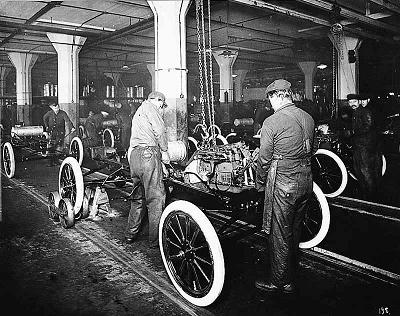
The prosperity of the 1920's, industries had expanded during the Great War, making weapons, uniforms, equipment etc. This expansion continued after the war, helped by massive reserves of raw materials and by high tariffs (import duties on foreign goods). Tariffs made foreign goods dearer, so Canada's goods were bought. Some industries were also given subsidies (cash support), which increased their profits. So there was a boom(economic expansion).
The greatest boom was in consumer goods, e.g. cars, refrigerators, radios, cookers, telephones etc. Ordinary people were encouraged through advertising to buy these goods and many could now afford what had been luxuries before the war. One reason was that they earned slightly higher wages because of the boom. Another reason was that the growth of hire purchase meant that people could spread the cost over months and even years.
But the main reason was that goods had become cheaper, e.g. 1908 the average cost of a car was $850 1925 the average cost of a car was $290. This was because of "mass production" methods used to produce many consumer goods. Assembly lines were built in factories and each worker concentrated on one small job only. The most famous example of this method was Henry Ford's factory which was fully automated (many of the jobs done by machines). Because of mass production and automation one Model T car was produced every ten seconds
No comments:
Post a Comment